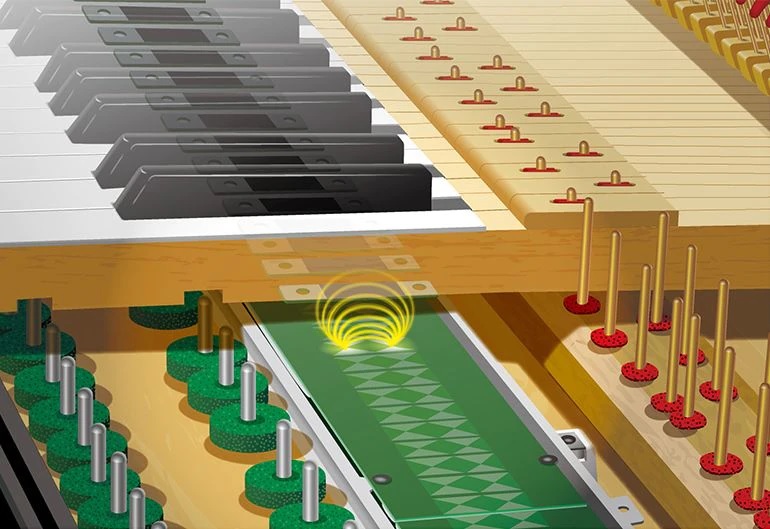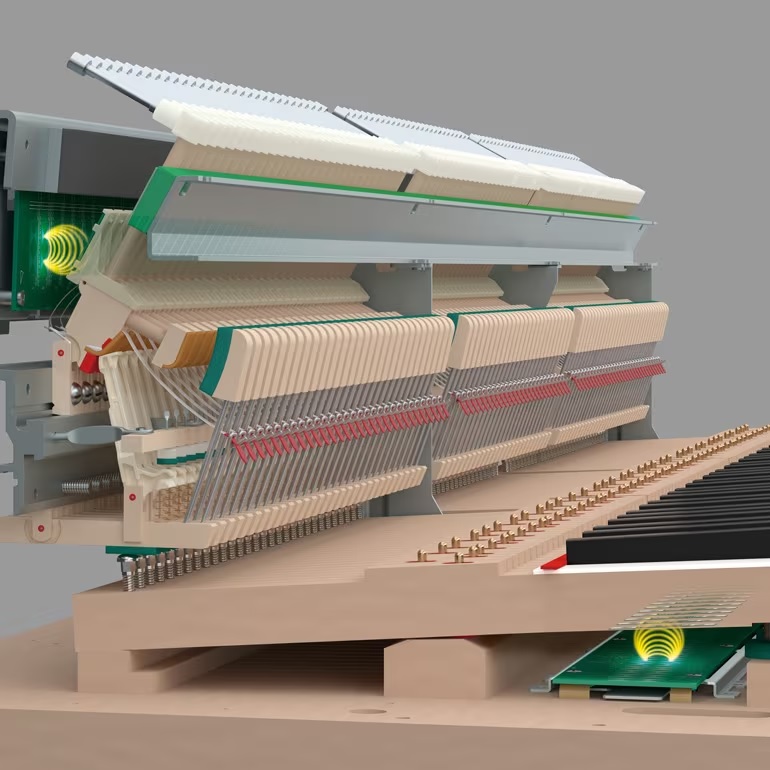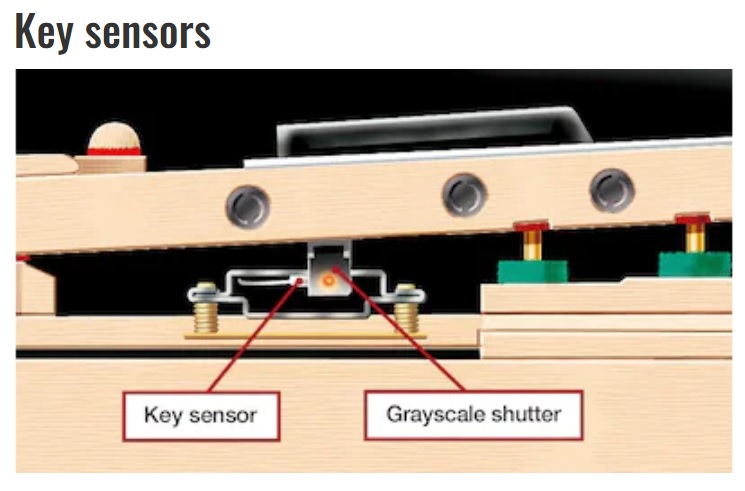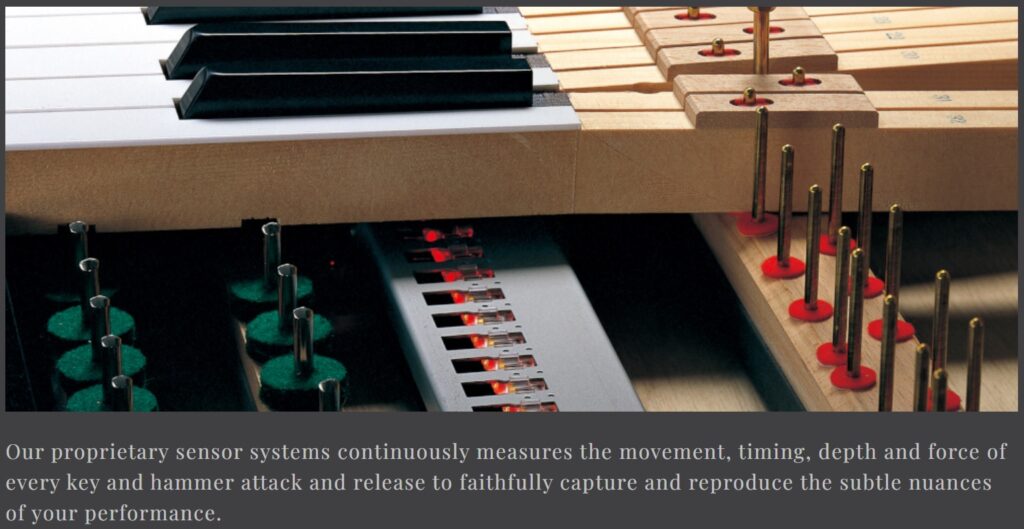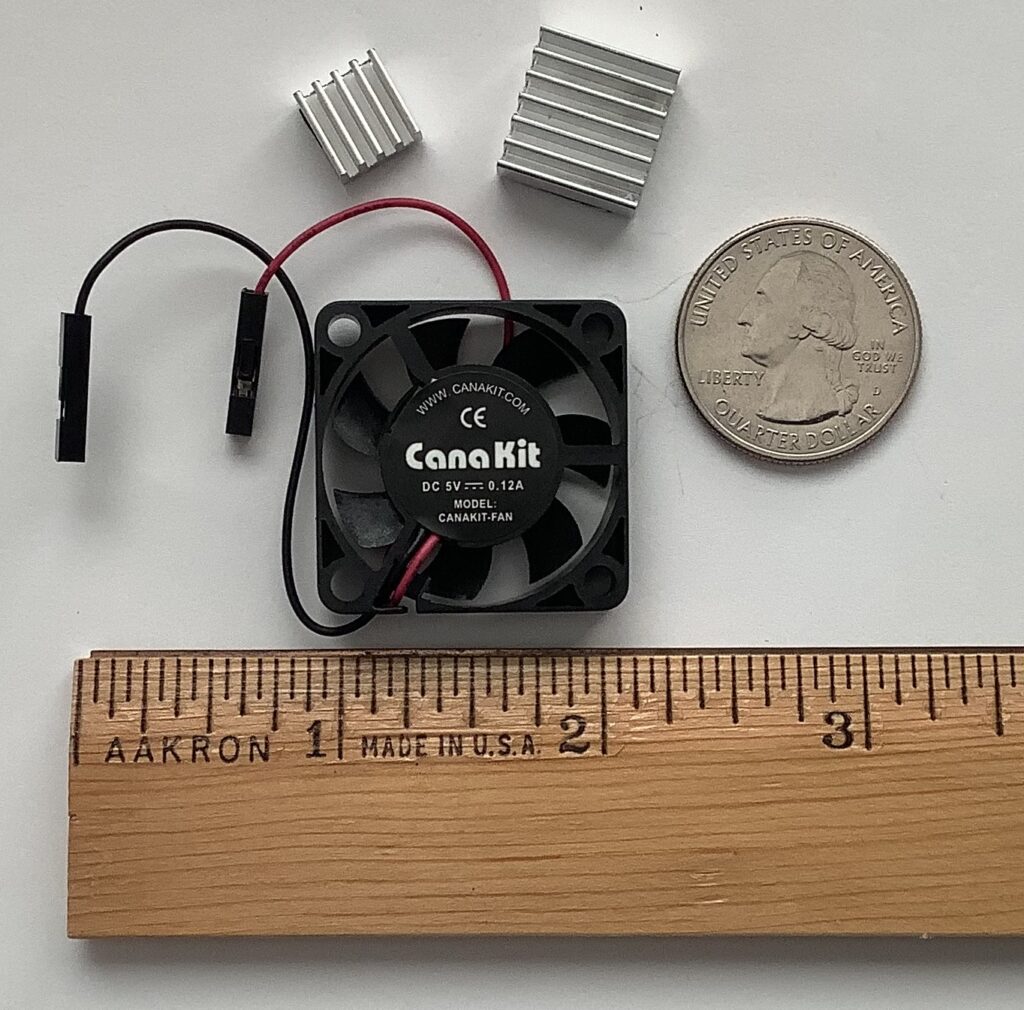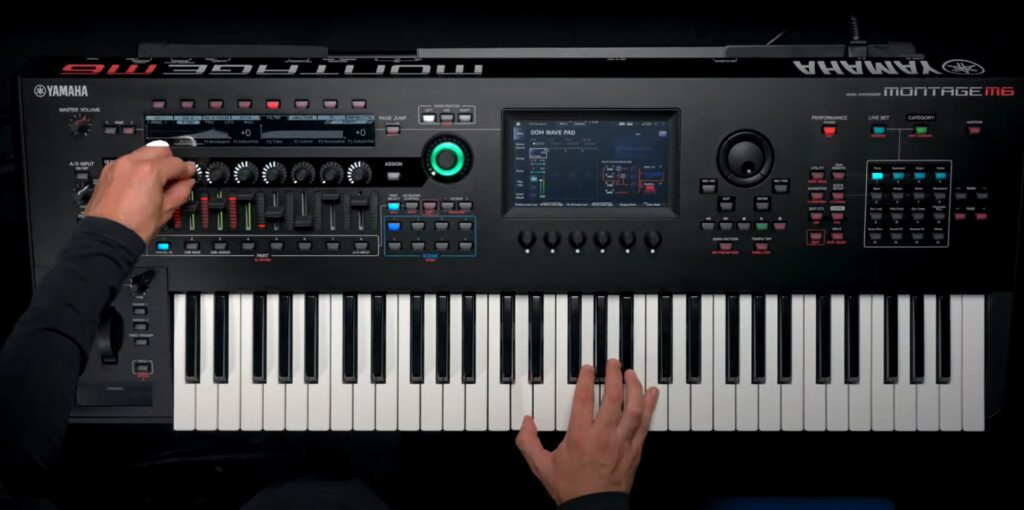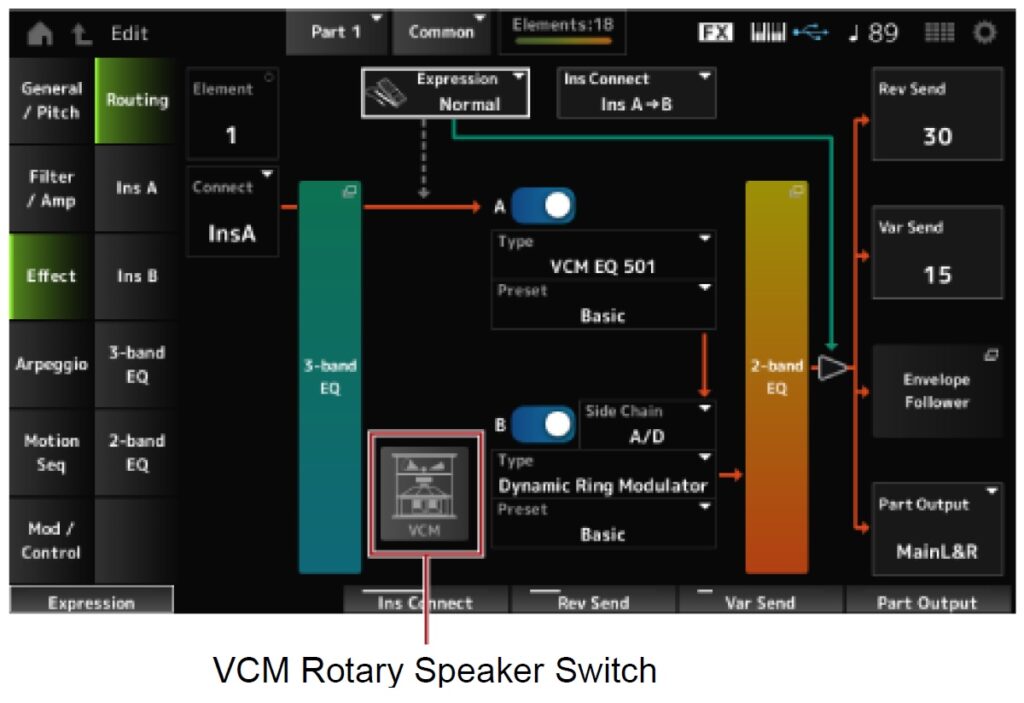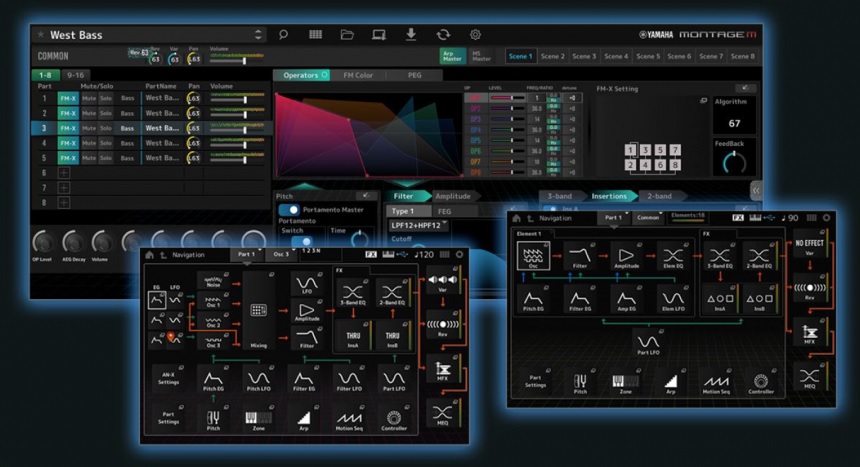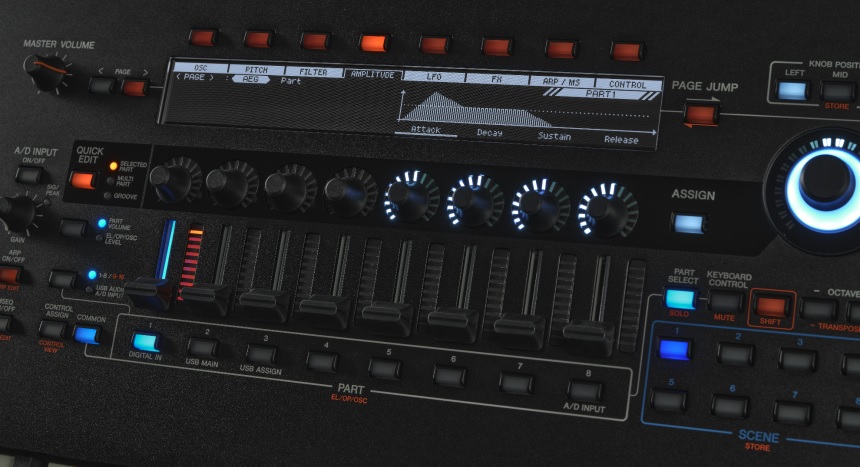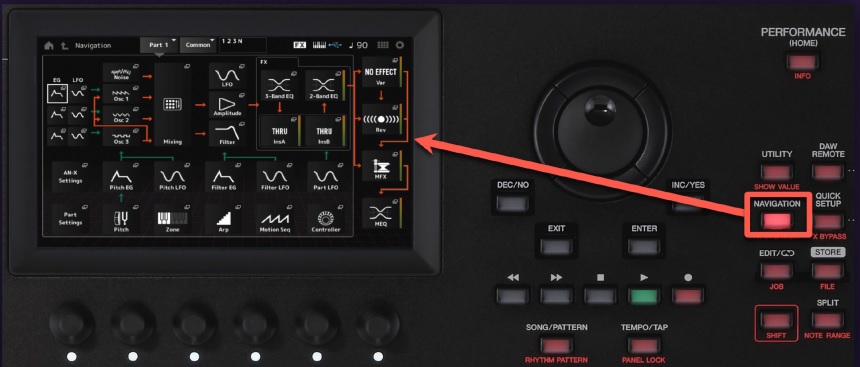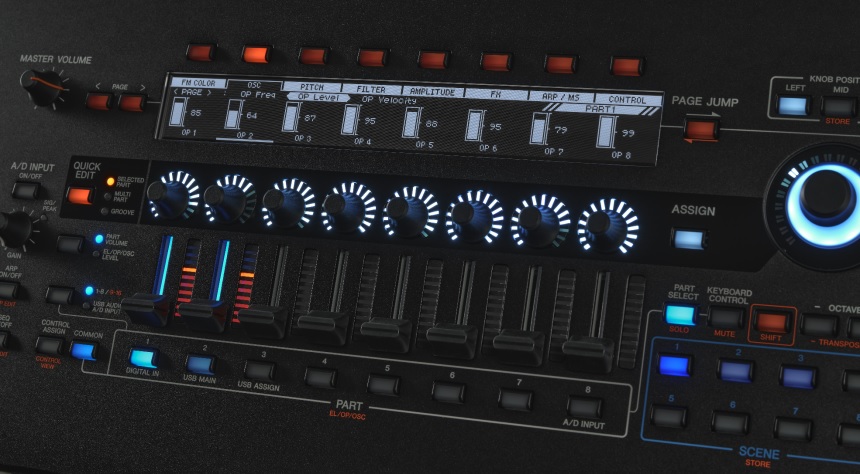Grabbed this week’s music binder and tried out a Yamaha Montage M8x for an hour. Overall, a good experience. The demo M8x was set up at Guitar Center with two Yamaha HS-8 monitors.
Here are my observations…
Pianos galore
I dove into the pianos first, because acoustic piano (AP) sounds and practice are my primary need at this time.
The CFX and Bösendorfer Imperial sounded good and clear. In fact, everything sounded good and clear. Might be due to the HS-8s being brighter than my studio monitors; might be due to Pure Audio Circuit 2 (PAC 2).
The Hamburg Grand — a Steinway, presumably — is brighter than I expected. It should cut through a band mix, no prob. Definitely a high-quality addition to the Montage range.
I briefly checked out the Nashville C3, the C7, and the Felt pianos just to verify that they are there. The audio definitely had more clarity than MODX or even Genos (gen 1).
I dove into the CFX grand programming. Yep, one part with 18 elements.
Yet, with all the acoustic pianos, something was missing. Don’t get me wrong, Montage M acoustic pianos will be great for the stage, especially if the pianist is competing with guitar, drum and/or other general cacophony. The APs don’t have the depth or dynamism that I hear in Clavinova, for example. Maybe it’s the missing VRM, Grand Expression Modeling, whatever. People still may choose to record exposed piano solos using virtual instruments or the real deal itself.
The user interface
If you’ve been using either Montage or MODX, be ready for change. It took a little while to come to grips with the new user interface (UI). I managed to navigate through AWM2 element programming and effects without too much trouble. However, old habits must change!
The main screen is clear and responsive enough. Much has been said about the touch screen response — didn’t bother me. I like the button matrix for voice selection. Very easy to use and I quickly depended upon it. Performance search is different and it required some trial, error and time before I became accustomed to it.
The sub display is beautifully clear and readible. Some people have been grumbling about pixel jaggies. Again, didn’t bother me. I’ll take that large display any day over the slim sub display on Genos. The large subdisplay allows BIG numbers and parameter names — good for stage work.
UI-wise, I’m on board with Montage M although one hour is not really enough to get the full sense of workflow.
Electric pianos
Montage M has new electric piano (EP) waveforms and performances. They beat everything I’ve played on MODX, Clavinova and Genos. I’m jealous and can’t wait to get my hands on these waveforms and voices on a ligher weight, more affordable gig instrument. My homework shows anywhere from 8 to 12 strike levels. Definitely top-notch.
Rotary speaker sim
I tried diving into the drawbar organs through the voice category buttons. Not the best idea as I kept running into old familier organ Performances. I dialed in a few Performance, heard swirlies and mentally shrieked, “No, no, this can’t be happening again!”
I suggest starting out in the “Best of Montage M” Live Set. Or, do a little menu diving to verify that you are hearing the new VCM rotary speaker sim. Familiar, old organ Performances continue to use the old ROTARY SPEAKER 1 and ROTARY SPEAKER 2 effect types.
Keep your eyes open and look for a big VCM rotary icon. The VCM icon pops up on the sub display as well as effect edit screens. For some reason, Montage M treats the VCM rotary sim as a separate effect block. You won’t necessarily find it in the Insert A or Insert B slots.
Once found though, you’ll be happy. Well, at least happier than Montage/MODX. I’d like it better if rotary speed could be switched by a pedal, right out of the box. It’s a long reach to the MOD wheel or ribbon controller on the 88.
GEX keyboard
AP and EP with GEX is satisfying. I would not call GEX “light.” The key weight felt similar to the GH3/GH3X — and left my hands somewhat tired, too. Crazy me, NWX or GrandTouch (wood, linear grading) remain at the top of my list.
Playing drawbar organ on GEX is a chore, but you probably guessed that already. Palm swipes are not fun. I could say the same for strings, woodwinds and the other non-piano voices which I auditioned. The lack of PAT on M6/M7 is a genuinely awkward subject for synthesists, organists, or people like me who spend a lot of gig time playing non-piano voices.
AN-X Performances
I didn’t invest a huge amount of time trying AN-X. I browsed the AN-X Performances in the “Best of Montage M” Live Set. The AN-X sound reminds me of the my old AN-200 groove box and why I love it. Maybe it’s just the patches that I tried, but the sound connected me to AN/VA back in the day — reminiscent of the Sequential Circuit Prophet upon which AN was modelled.
I would be very pleased to own a Montage M with AN-X. I’m more excited about AN-X, now, than FM-X. The AN-X Performances have a certain dynamism.
The F-word
At this point, I don’t give a fig. GC had classic rock on the PA and how are you going to listen for anything quiet and subtle during “Smoke on the Water”? So, all I can say is, “Make your choices.”
Where does this leave me?
This time around, I’m interested in getting the best digital piano experience that I can — for the money. I want good value and I’m not willing to spring for any old expensive 88.
The Yamaha Montage M series sound terrific. In person, they look terrific. Whatever 88 I buy will sit in our dining room. Therefore, visual aesthetics are important. As much as I like the look of Montage M8x and P-515 (P-525), a furniture digital piano is more appropriate for the dining room. All the dancing lights would entertain guests, but… Might as well rule out CP88, too, on aesthetic grounds.
The other issue is the GEX keyboard. It’s a good keybed, but I find the NWX to be more comfortable for extended play. I may be in a bit of trouble here as Yamaha seems to be phasing out NWX. The P-515 successor, P-525, for example, has a GrandTouch-S (wood) keybed.
As to sound, the Montage M series acoustic and electric pianos are damned good. I love the variety. (Same could be said of Stage CP since it’s roughly the same line-up.) The VCM rotary speaker sim is very welcome and long overdue. The acoustic piano sounds, however, are missing VRM and I don’t want to compromise. VRM definitely enriches the digital sound especially when you’re playing solo or practicing.
Not that it’s a GEX thing specifically, but I have real concerns about playing non-piano voices on a so-called piano action keybed. I play organ, strings, woodwinds, etc. daily on MODX (el-cheapo semi-weighted action) and Genos (FSX). FSX is still a decent compromise across a wide spectrum of voices. I think synth players will be happier with M6/M7. Even Yamaha pitch M8x as “M8x for the pianist.”
At this point, I will probably find a landing place in Clavinova-land. That doesn’t mean I dislike the Montage M series. On the contrary, I can’t wait for “MOM” or “MOMO”! My MODX6 is going to wear out eventually…
GENOS2 incoming, November
Still awaiting SEQTRAK™
Copyright © Paul J. Drongowski


